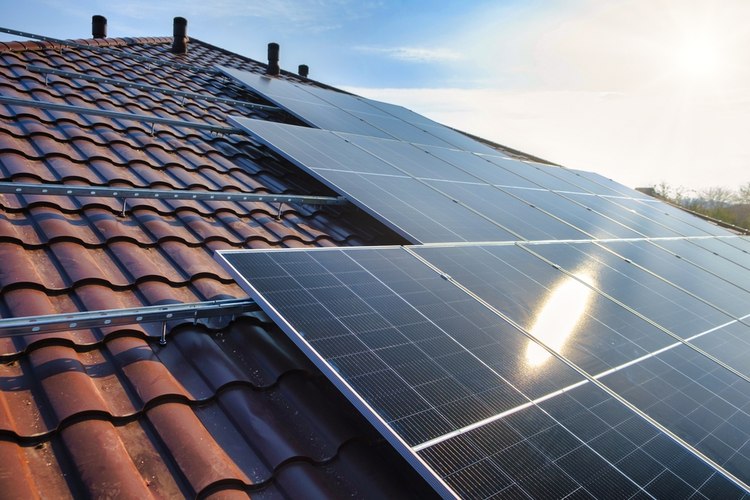Solar-Powered Air Conditioning: The Future of Home Cooling Systems
As energy costs continue to rise and environmental concerns grow, homeowners are increasingly seeking innovative solutions to keep their houses cool while minimizing their carbon footprint. Solar-powered air conditioning systems have emerged as a groundbreaking technology that addresses both these needs, offering an energy-efficient and eco-friendly alternative to traditional cooling methods. This article explores the benefits and functionality of solar air conditioners, their impact on home energy consumption, and how they're revolutionizing residential cooling systems.

Unlike conventional air conditioners that consume large amounts of electricity from fossil fuel sources, solar-powered systems draw their energy directly from the sun. This not only reduces your carbon footprint but also provides a sustainable cooling solution that can operate even during power outages, ensuring your home remains comfortable in all conditions.
What are the energy efficiency benefits of solar air conditioners?
One of the most significant advantages of solar air conditioning systems is their exceptional energy efficiency. By utilizing free and renewable solar energy, these systems can dramatically reduce a home’s electricity consumption and associated costs. Many solar air conditioners are designed with advanced energy-saving features, such as variable speed compressors and smart controls, which further optimize their performance and efficiency.
Additionally, solar air conditioners often continue to generate power even when not in use for cooling. This excess energy can be fed back into the grid or stored in batteries for later use, potentially offsetting other household energy needs and further reducing overall electricity costs.
Can solar air conditioners effectively cool an entire house?
Modern solar air conditioning systems are highly capable of cooling entire homes, even in hot and humid climates. These systems are available in various sizes and configurations to suit different house sizes and cooling requirements. From small, ductless mini-split units ideal for individual rooms to larger central air systems designed for whole-house cooling, solar-powered options can meet diverse residential needs.
When properly sized and installed, a solar air conditioner can maintain comfortable temperatures throughout your home just as effectively as traditional systems. However, it’s crucial to have a professional assessment of your home’s cooling needs and solar potential to ensure the system is adequately designed for optimal performance.
What are the long-term cost savings of installing a solar cooling system?
While the initial investment in a solar air conditioning system may be higher than traditional units, the long-term cost savings can be substantial. By significantly reducing or eliminating your cooling-related electricity bills, these systems can pay for themselves over time through energy savings. The exact payback period depends on factors such as local electricity rates, climate conditions, and system size, but many homeowners see a return on investment within 5-10 years.
| System Type | Initial Cost Range | Estimated Annual Savings | Payback Period |
|---|---|---|---|
| Solar Central AC | $15,000 - $30,000 | $1,000 - $2,500 | 6-12 years |
| Solar Mini-Split | $6,000 - $15,000 | $500 - $1,500 | 4-10 years |
| Hybrid Solar/Grid | $10,000 - $25,000 | $800 - $2,000 | 5-13 years |
Prices, rates, or cost estimates mentioned in this article are based on the latest available information but may change over time. Independent research is advised before making financial decisions.
It’s important to note that many regions offer incentives, tax credits, or rebates for installing solar energy systems, which can significantly reduce the initial costs and shorten the payback period. Additionally, a solar air conditioning system can increase your home’s value, providing an additional financial benefit.
How do solar air conditioners contribute to a more sustainable home?
By relying on clean, renewable solar energy, these cooling systems significantly reduce a home’s carbon emissions and overall environmental impact. Traditional air conditioners not only consume large amounts of electricity but also use refrigerants that can be harmful to the environment if leaked. Solar air conditioners often use more eco-friendly refrigerants and, by reducing grid electricity consumption, help decrease the demand for fossil fuel-generated power.
Furthermore, the integration of solar air conditioning into a home’s energy system can serve as a stepping stone towards broader energy independence. Many homeowners who install solar cooling systems find it easier to expand their solar capacity for other household needs, contributing to a more comprehensive sustainable living approach.
What maintenance is required for solar-powered air conditioning systems?
Solar air conditioners generally require similar maintenance to traditional systems, with the added care needed for the solar panel array. Regular cleaning of the solar panels to ensure maximum efficiency, occasional checks of the inverter and electrical connections, and standard air conditioner maintenance such as filter changes and coil cleaning are typically all that’s needed.
Many modern solar air conditioning systems come with smart monitoring capabilities, allowing homeowners to track performance and receive maintenance alerts. This proactive approach to system care can help ensure optimal efficiency and longevity, maximizing the benefits of your solar cooling investment.
In conclusion, solar air conditioners represent a significant leap forward in home cooling technology, offering an energy-efficient, environmentally friendly, and cost-effective solution for modern homeowners. As the technology continues to advance and become more accessible, it’s likely that we’ll see an increasing number of houses cooled by the power of the sun, leading to more sustainable and comfortable homes for generations to come.






